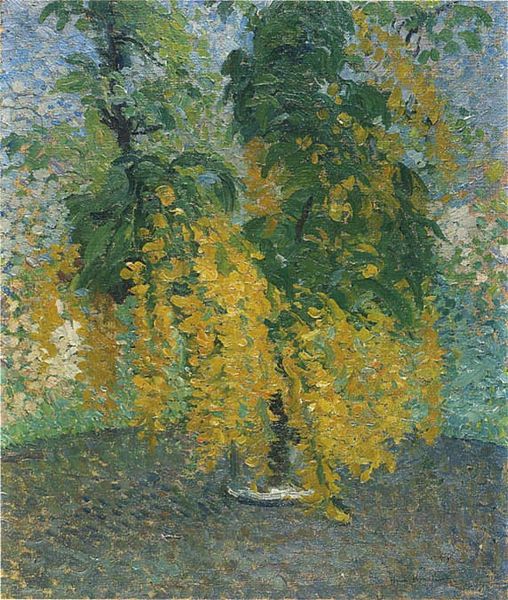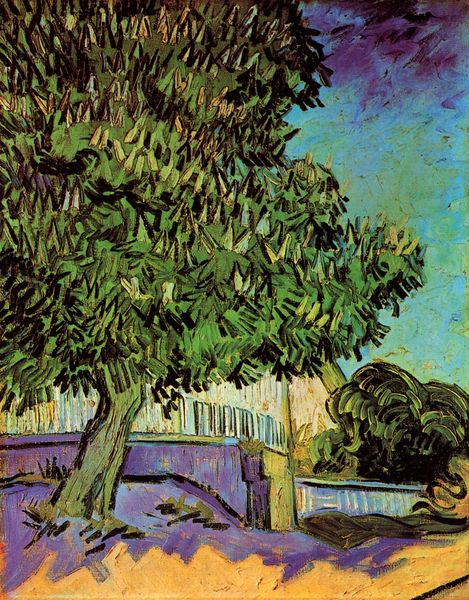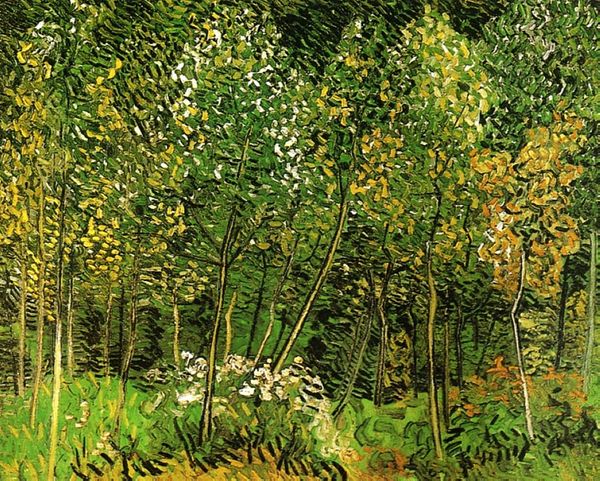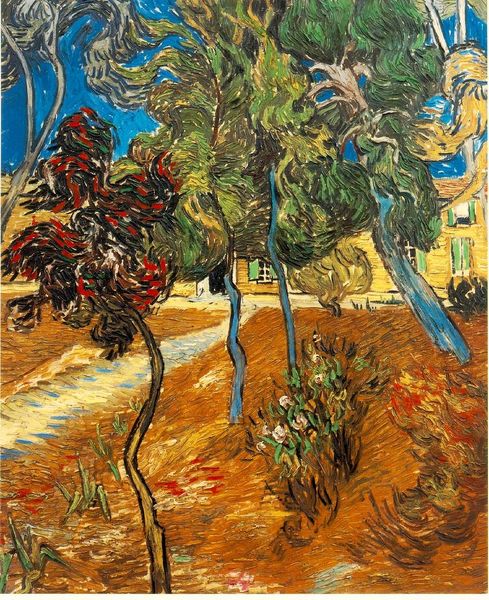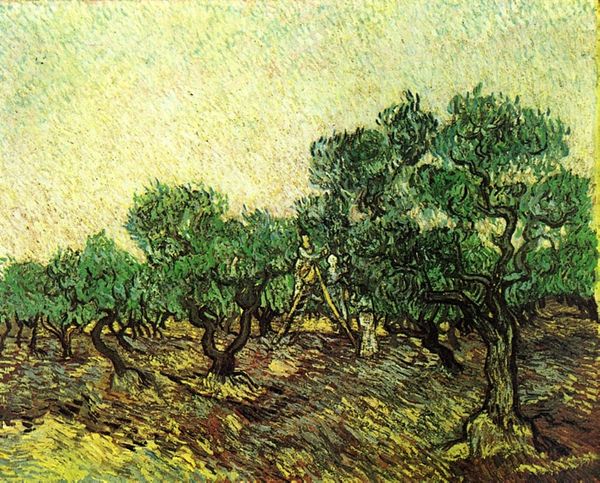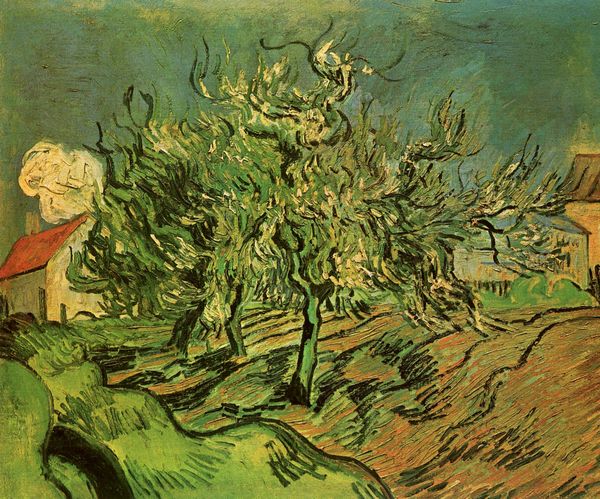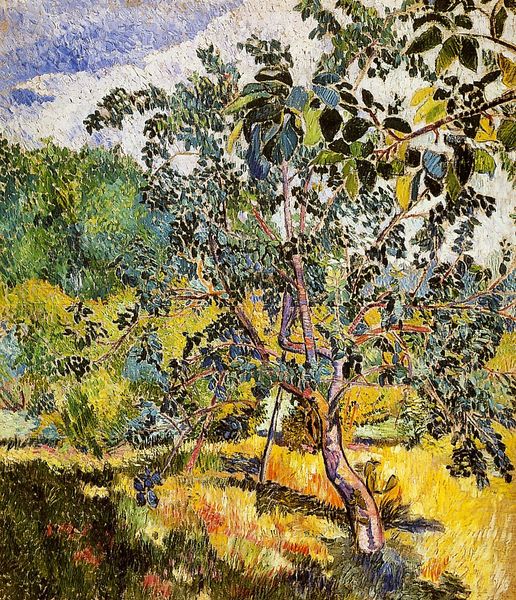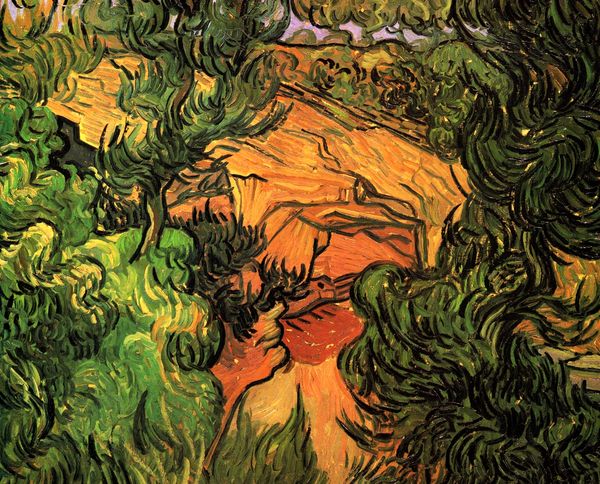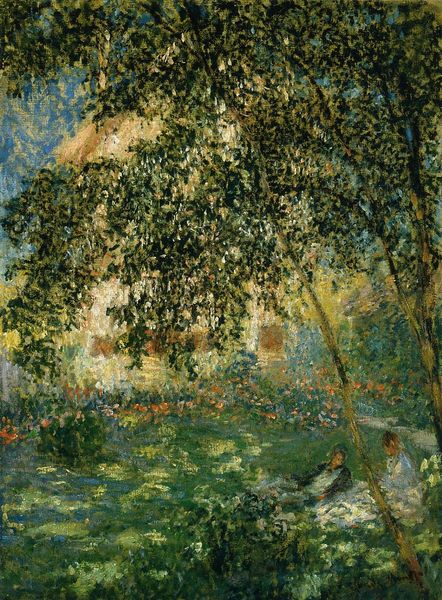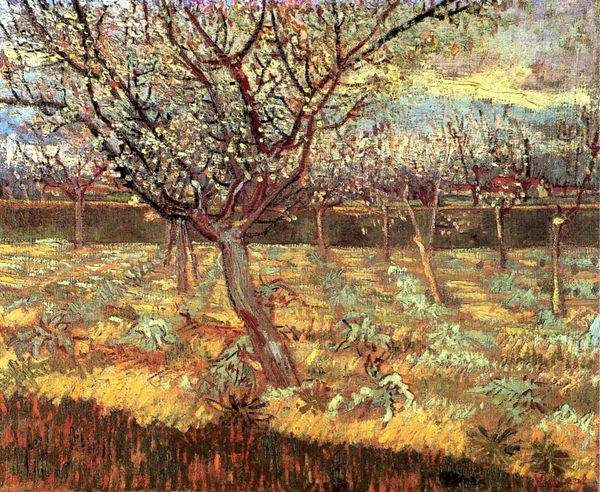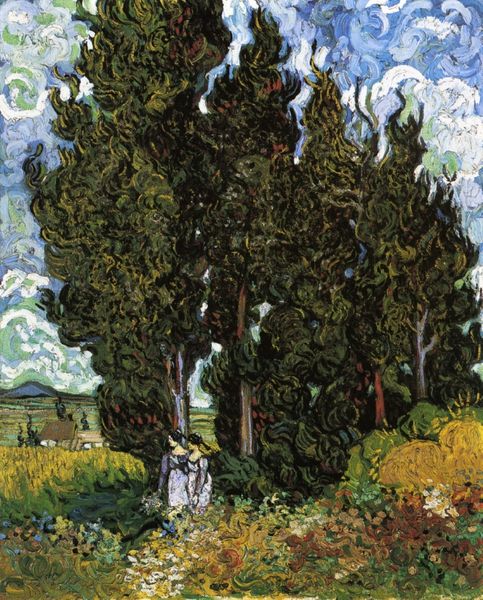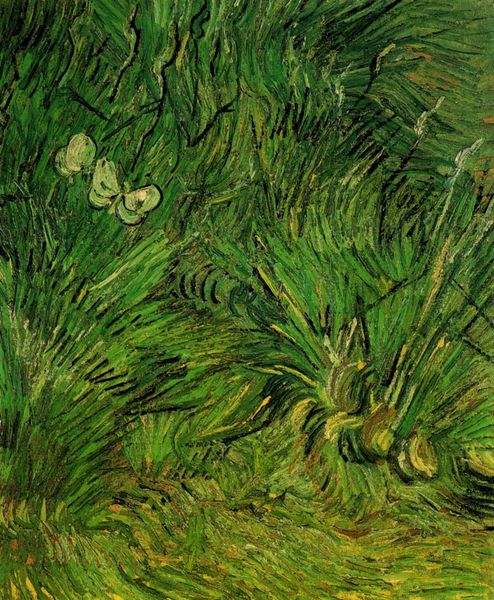
painting, plein-air, oil-paint
tree
painting
impressionism
impressionist painting style
plein-air
oil-paint
landscape
flower
impressionist landscape
oil painting
post-impressionism
naturalism
Copyright: Public domain
Editor: Right, next up we have Van Gogh’s “Chestnut Tree in Blossom,” an oil painting from 1887. It's wonderfully green, overwhelmingly so, like standing right in the heart of nature. What socio-political influences do you see shaping this kind of naturalism? Curator: That’s an astute observation. The late 19th century saw a complex relationship between industrialization and the desire for a return to nature. Rapid urbanization drove a nostalgia for the pastoral, but it was more than simple longing. How do you see the act of painting en plein air fitting into the art world's growing academic debates? Editor: Interesting! The physicality of the act becomes as important as the scene itself, as plein air moved art from atelier to the real world. It makes me think, what was the dominant institutional view of this style, if any, during its development? Curator: The art academies favored more controlled, idealized depictions, typically made inside. Van Gogh and his contemporaries actively rejected those artistic limitations. You have to also consider the rise of impressionism and its focus on capturing fleeting moments of light and color as an act of defiance to establishments of power, wouldn't you agree? Editor: Yes! The movement’s name says it all, Impressionism. I think now, though, we tend to see his later works as so obviously the product of genius that we gloss over its contentious start! Curator: Exactly, it wasn’t always easily received, and that tension contributed to how we see the art world, shaping its institutions as it developed, for both artists and for public consumption. Thank you for the thought provoking exchange, the conversation was enlightening. Editor: Indeed, thank you.
Comments
No comments
Be the first to comment and join the conversation on the ultimate creative platform.

